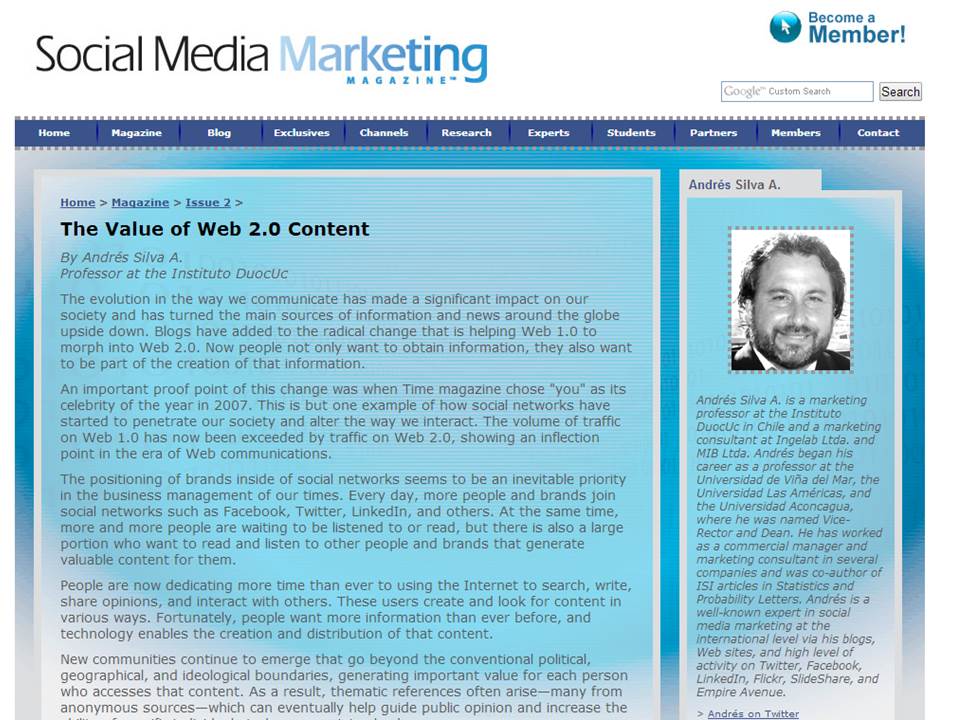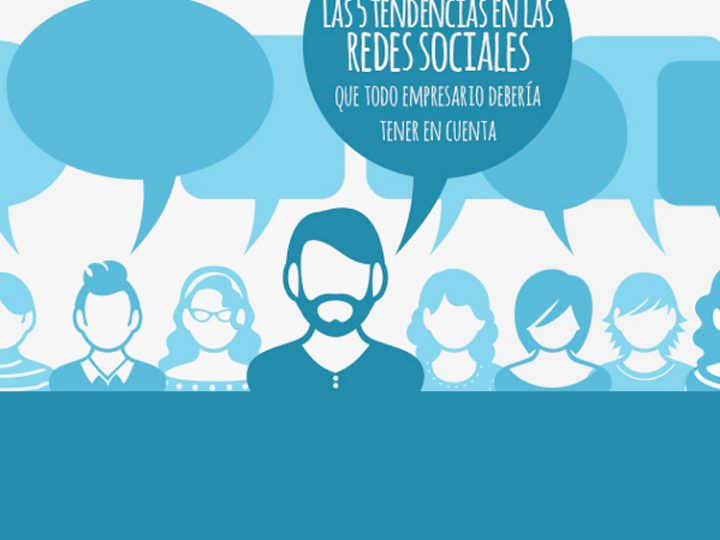

The evolution in the way we communicate has made a significant impact on our society and has turned the main sources of information and news around the globe upside down. Blogs have added to the radical change that is helping Web 1.0 to morph into Web 2.0. Now people not only want to obtain information, they also want to be part of the creation of that information.
An important proof point of this change was when Time magazine chose «you» as its celebrity of the year in 2007. This is but one example of how social networks have started to penetrate our society and alter the way we interact. The volume of traffic on Web 1.0 has now been exceeded by traffic on Web 2.0, showing an inflection point in the era of Web communications.
The positioning of brands inside of social networks seems to be an inevitable priority in the business management of our times. Every day, more people and brands join social networks such as Facebook, Twitter, LinkedIn, and others. At the same time, more and more people are waiting to be listened to or read, but there is also a large portion who want to read and listen to other people and brands that generate valuable content for them.
People are now dedicating more time than ever to using the Internet to search, write, share opinions, and interact with others. These users create and look for content in various ways. Fortunately, people want more information than ever before, and technology enables the creation and distribution of that content.
New communities continue to emerge that go beyond the conventional political, geographical, and ideological boundaries, generating important value for each person who accesses that content. As a result, thematic references often arise—many from anonymous sources—which can eventually help guide public opinion and increase the ability of specific individuals to become opinion leaders.
But what does it mean that these opinion leaders are able to create power from anonymity? The answer isn’t simple. An important factor seems to be in the content created by those idividuals. An emblematic example of this situation is the case of President Barack Obama, as Dr. Jennifer Aaker at Stanford states in the first issue of Social Media Marketing Magazine. She said, «Barack Obama, then a little-known senator from Illinois, fueled an online grassroots campaign that directly led to him becoming the first African-American President of the United States (and the most popular living figure on Facebook).»
Then another question emerges: What are the elements that make the content so valuable to the audience? In my research, I have observed that there are at least five key elements responsible for the value of the content for a specific audience:
-
Pertinence: The degree of opportunity in the content, its relationship to the interests of the audience, and the level of convenience for the reader of the contributed content.
-
Relevance: How significant the content is to the audience.
-
Attractiveness: How captivating, enticing, disturbing, evocative, and/or striking the content is; the degree of attraction the content has for the audience.
-
Singularity: How original or unusual the content is; indicates the degree of differentiation from other content.
-
Interactivity: The degree of collaboration with the audience in the creation of content; each contributor can be a protagonist of the content and feel valued for his/her opinions and contributions, which generates a sense of community and belonging.
I have also seen that each factor affects, somehow, the final value of the created content on the Web. And there are a number of sites that produce content while considering these elements. Two of some of the most meaningful examples are BarackObama.com and Mashable.com. They have not only a high level of traffic, but a high level of influence as well.
In the final analysis, it matters not just what is said, but also how, when, to whom, where, and why it is said. From this perspective, Web 2.0 content is a strategically important variable to consider when developing any social media marketing plan.
Source: By Andrés Silva, SMMmagazine.com, september 2010.
0



